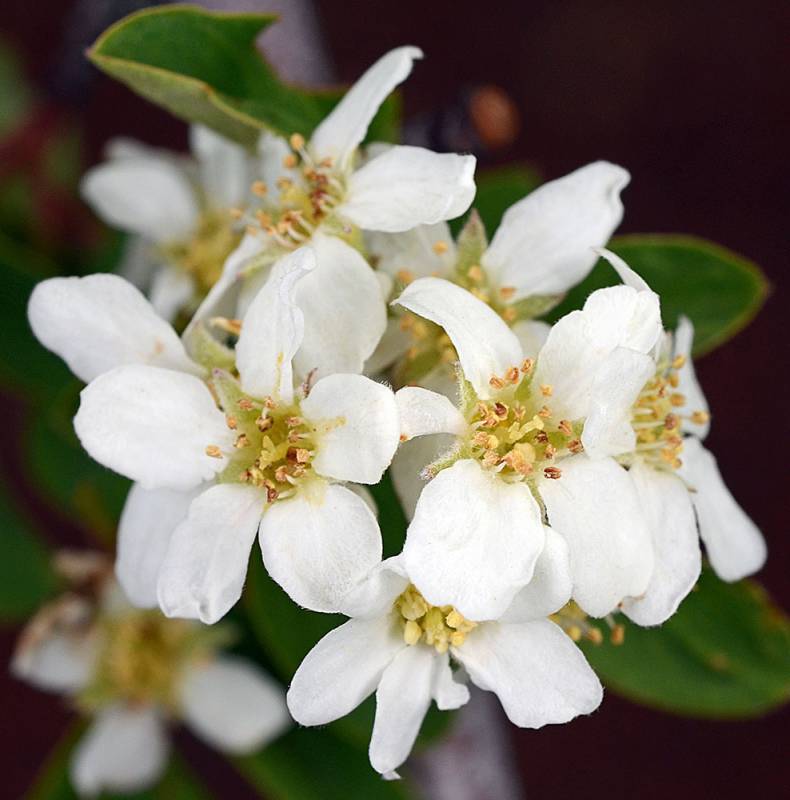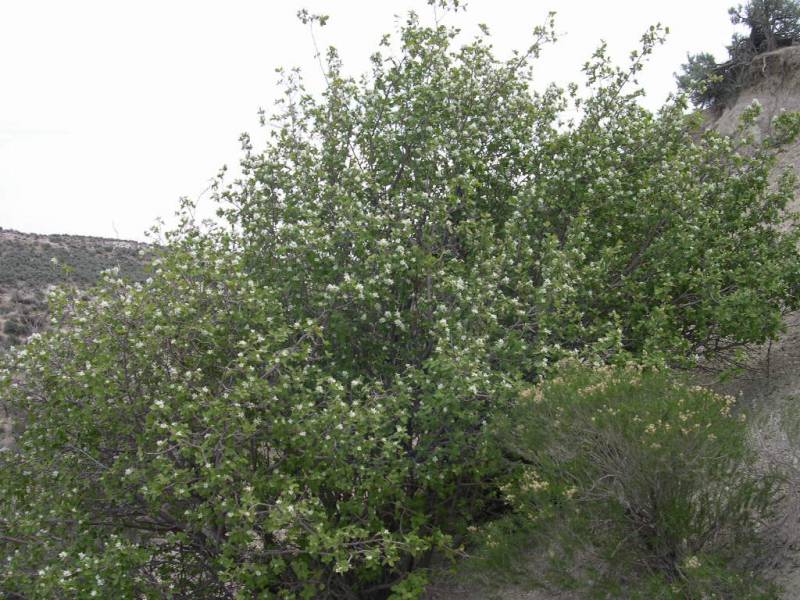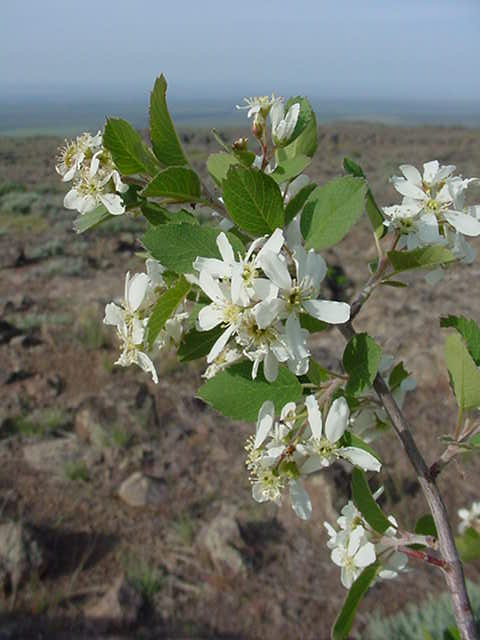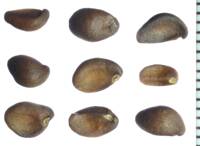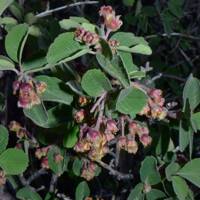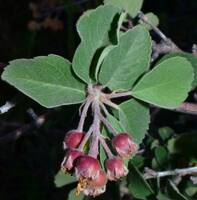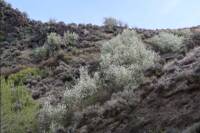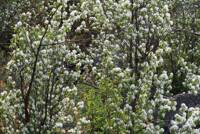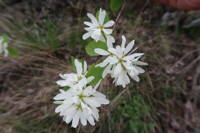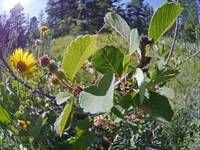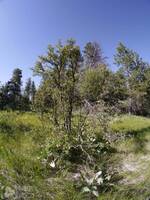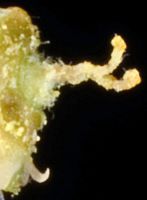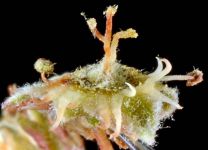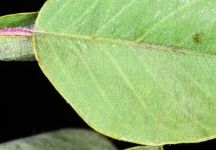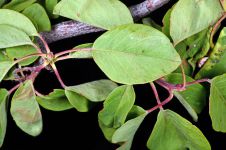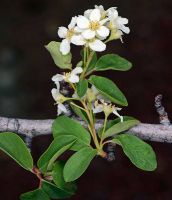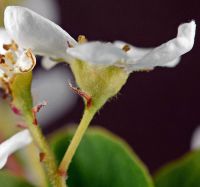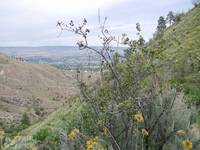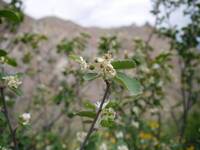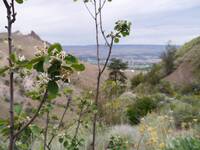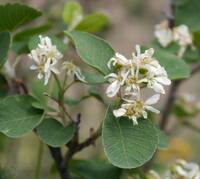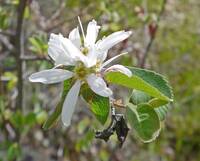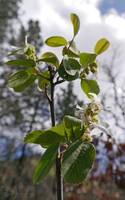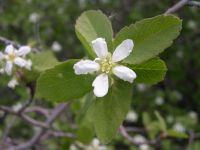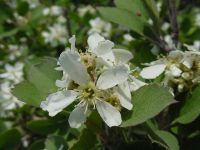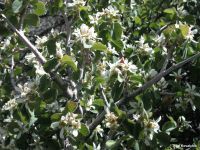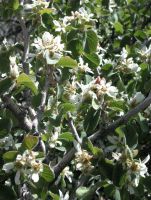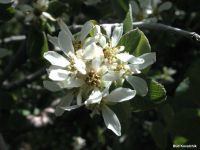Distribution: Occurring east of the Cascades crest in Washington; Washington to Baja California, east to the Rocky Mountains and Texas.
Habitat: Rimrock, valleys, gullies and hillsides, from sagebrush desert to mid-elevations in the mountains.
Flowers: May-June
Origin: Native
Growth Duration: Perennial
Conservation Status: Not of concern
Pollination: Bees, flies
Irregularly-branched shrubs 0.5-3.0 m. tall, the young branches somewhat woolly.
Leaves alternate, deciduous, petiolate, the blades yellowish-green, oblong-elliptic to broadly obovate, 1.5-3 cm. long, serrate on the upper half.
Flowers 3-6 in short, silky racemes; calyx woolly to glabrous, the 5 lobes narrowly lanceolate, 2.5-3.5 mm. long; petals 5, white, oblanceolate with a wedge-shaped base, 6-9 mm. long and up to 4 mm. broad; stamens about 15; styles usually 4, united toward the base; top of the ovary woolly.
Fruit berry-like, sub-globose, up to 1 cm. long, dark purple and somewhat fleshy.
Publication: in Wissensch. Progr. Falk. Realgymnas. Berlin. 1890.
Amelanchier alnifolia (Nutt.) Nutt. ex M. Roem. var. utahensis (Koehne) M.E. Jones
Amelanchier australis Standl.
Amelanchier bakeri Greene
Amelanchier glabra Greene
Amelanchier goldmanii Wooton & Standl.
Amelanchier gracilis A. Heller
Amelanchier mormonica C.K. Schneid.
Amelanchier oreophila A. Nelson
Amelanchier utahensis Koehne var. oreophila Clokey
Amelanchier utahensis Koehne var. utahensis [JPM2]
PNW Herbaria: Specimen records of Amelanchier utahensis in the Consortium of Pacific Northwest Herbaria database
WA Flora Checklist: Amelanchier utahensis checklist entry
OregonFlora: Amelanchier utahensis information
E-Flora BC: Amelanchier utahensis atlas page
CalPhotos: Amelanchier utahensis photos

